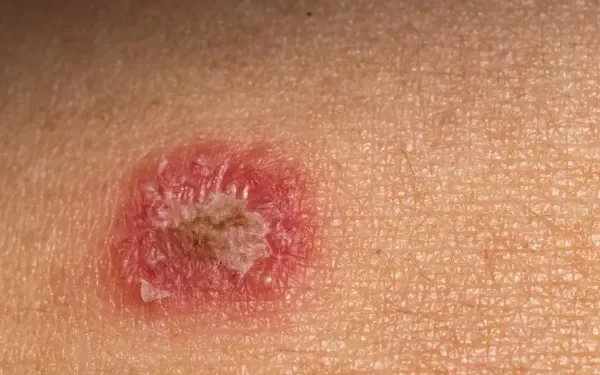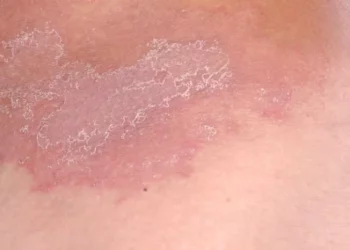A new and concerning fungal infection is making its way through New York City, with at least five confirmed cases reported this year. The infection, caused by a strain of ringworm fungus, is unusual because it spreads primarily through sexual contact, a transmission route rarely seen with other types of ringworm.
The fungus in question, Trichophyton mentagrophytes ITS genotype VII (TMVII), was first identified in the U.S. earlier this year. It was previously found only in parts of Europe and Asia. Now, researchers from New York University Langone Health, along with other health experts, have reported an additional four cases of TMVII in the city between April and July 2024. The findings were published last Thursday in the Centers for Disease Control and Prevention’s Morbidity and Mortality Weekly Report.
While most ringworm infections are benign, causing mild symptoms such as itchy, ring-shaped rashes, this particular strain of the fungus has raised alarms due to its ability to spread through close skin-to-skin contact, including sexual contact. The new strain has been found to cause lesions not just in typical areas like the skin but also on the genitals, buttocks, face, trunk, and extremities, which is particularly concerning for those at higher risk.
First Cases in the U.S. Spark Concern
The first U.S. case of TMVII was reported in June 2024. This strain had been confined to Europe and parts of Asia before making its appearance in New York. The five individuals affected in the city so far are all cisgender men, most of whom had sex with other men. Among the cases, one individual was a sex worker, while two others were involved in sexual contact with each other. Research indicates that past clusters of TMVII have predominantly impacted men who have sex with men, though there have been instances in both heterosexual men and women.
The spread of TMVII is thought to have originated in Southeast Asia, where it is believed to have been transmitted through contact with infected female sex workers. The fungus has since become endemic in Europe, and experts are concerned that it could spread more widely across the U.S.
Rising Concern for Local Transmission
While only a small number of cases have been confirmed in the U.S., the researchers warn that local transmission in New York City and other areas is a real possibility. Avrom Caplan, a study researcher and dermatologist at NYU Langone Health, emphasized the need for vigilance as the fungus may spread further, particularly given its transmission via close skin contact, including sexual activity.
“We have only confirmed a small number of cases in the U.S., but based on reports from Europe, we need to be prepared for potential local spread,” Caplan said. “Endemicity isn’t inevitable, but given the way the fungus spreads, we must remain cautious and proactive.”
Precautionary Measures and Public Awareness
The primary goal of the study’s findings is to raise awareness among healthcare providers, researchers, and the public about this emerging infection. Caplan stressed the importance of recognizing symptoms early, as TMVII may present differently from other ringworm infections. The fungus may be mistaken for other dermatological conditions, and because it spreads through sexual contact, timely treatment is crucial.
The researchers recommend that individuals with active fungal infections avoid skin contact with others to prevent further transmission. They also urge clinicians to be vigilant in diagnosing and treating TMVII, particularly in sexual health clinics and other settings where higher-risk populations may seek care.
A Growing Threat in New York City
In addition to TMVII, health experts are also keeping an eye on other emerging strains of ringworm in New York. One such strain, Trichophyton indotineae, has been linked to more severe infections and may also show resistance to common antifungal treatments. As these new fungal strains continue to surface, the city’s healthcare system faces an increasing challenge in managing and treating these infections.
As researchers continue to monitor the situation, experts are calling for increased awareness, early diagnosis, and preventative health measures to mitigate the spread of these potentially more dangerous forms of ringworm.
The spread of TMVII, a sexually transmitted ringworm fungus, highlights the evolving nature of fungal infections and the need for vigilance in both diagnosis and prevention. While the current cases are contained, the potential for further local transmission remains a concern, particularly in sexual health communities. As more research is conducted, healthcare providers and the public must remain proactive to control this emerging threat.
Related topics:


























